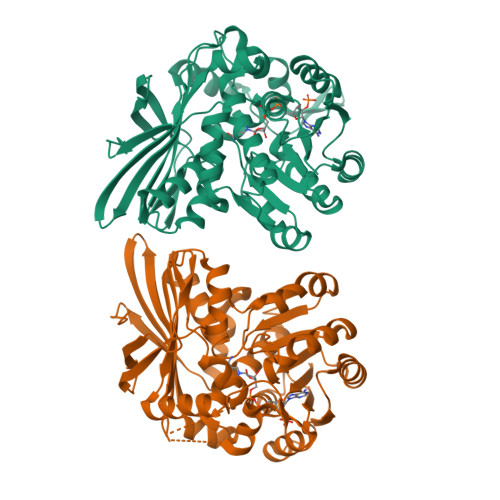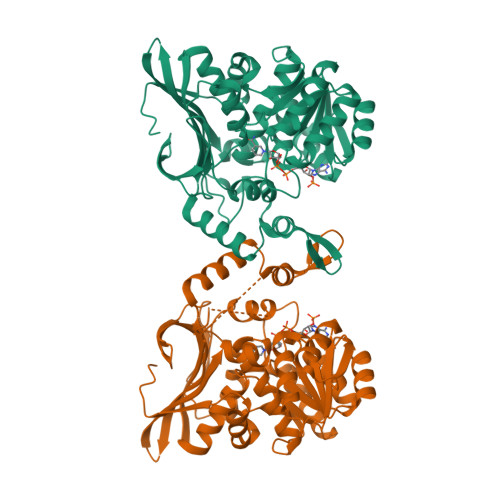Kinetic and structural characterization of carboxyspermidine dehydrogenase of polyamine biosynthesis.
Lee, D.F., Atencio, N., Bouchey, S., Shoemaker, M.R., Dodd, J.S., Satre, M., Miller, K.A., McFarlane, J.S.(2023) J Biological Chem 299: 105033-105033
- PubMed: 37437886
- DOI: https://doi.org/10.1016/j.jbc.2023.105033
- Primary Citation of Related Structures:
8DEB - PubMed Abstract:
Polyamines are positively charged alkylamines ubiquitous among eukaryotes, prokaryotes, and archaea. Humans obtain polyamines through dietary intake, metabolic production, or uptake of polyamines made by gut microbes. The polyamine biosynthetic pathway used by most gut microbes differs from that used by human cells. This alternative pathway employs carboxyspermidine dehydrogenase (CASDH), an enzyme with limited characterization. Here, we solved a 1.94 Å X-ray crystal structure of Bacteroides fragilis CASDH by molecular replacement. BfCASDH is composed of three domains with a fold similar to saccharopine dehydrogenase but with a distinct active site arrangement. Using steady-state methods, we determined k cat and k cat /K m for BfCASDH and Clostridium leptum CASDH using putrescine, diaminopropane, aspartate semi-aldehyde, NADH, and NADPH as substrates. These data revealed evidence of cooperativity in BfCASDH. Putrescine is the likely polyamine substrate and NADPH is the coenzyme used to complete the reaction, forming carboxyspermidine as a product. These data provide the first kinetic characterization of CASDH-a key enzyme in the production of microbial polyamines.
Organizational Affiliation:
Department of Chemistry and Biochemistry, Fort Lewis College, Durango, Colorado, USA.

















